3 easy ways to capture a screenshot on your Windows computer
Hoping to take a screen capture? Maybe you have to send one to technical support or simply catch something entertaining to post on Twitter.
Notwithstanding what you require it for, there are various Windows includes a few implicit utilities for catching and sparing screen captures, and they're just a couple of snaps away. The guidelines beneath apply just to catching a screen capture on a Windows workstation, so look at our how-to guides for Chromebooks or Macintosh in the event that you require that.
So how about we begin with the least demanding and most direct way, utilizing console easy routes.
METHOD 1: USING THE DEFAULT KEYBOARD SHORTCUTS
Quick tips:
- Your keyboard’s Print Screen key copies your current screen. You can then paste it into image editing software with Ctrl + V.
- Pressing Alt + Print Screen will capture only the currently selected window.
Taking a screenshot is simple, regardless of which version of Windows you’re running. There are only a few steps — assuming you haven’t fiddled with the default keyboard controls and shortcuts — and if you need some free image editing software to tweak them, these are our favorites.
Step 1: Capture the image — Assuming the area you want to capture is displayed on your screen, press the “Print Screen” (often shortened to “PrtScn”) key, typically located in the upper-right corner of your keyboard, to capture a screenshot of your entire display. Alternatively, press “Alt + Print Screen” to capture a screenshot of the active window.
If you’re on a laptop, you may need to press “Fn” + “Print Screen” if your laptop has another feature assigned to that particular key.
There will be no noise or any other indication the screenshot was taken, but the resulting image will be saved as a PNG file to your clipboard. Unless you’re using a version before Windows 8, press the Windows Key + Print Screen to automatically save a full-screen screenshot within the “Screenshots” folder of your picture directory.
Alternatively, if you have Dropbox installed, the screenshot will be automatically deposited in your Dropbox directory, under Screenshots.
Step 2: Open Paint — In Windows 10, you can open the Start menu, go to “All Apps”, and scroll through the alphabetical list until you find Paint. Alternatively, use the Windows search box to look for “Paint” and click the corresponding icon.
If using Windows 7 and 8, you can find the Paint app in a few different ways, but both support the search tool which will find what you need straight away.
Step 3: Paste the screenshot — Once Paint is open, click the “Paste” button in the upper-left corner of the program, choose “Edit” then “Paste”, or press “Ctrl + V” on the keyboard to paste your screenshot.
Step 4: Save the screenshot — Perform any edits you want, such as cropping the image to a specified area, and click the main “File” option in the upper-left corner, followed by “Save as.”
Step 5: Title the new file, choose a save location, and select your desired file format from the drop-down menu. For most purposes, JPG will do fine, but a variety of other formats are available to choose from such as PNG, BMP, GIF, and others. Click the gray “Save” button in the bottom-right corner when finished.
METHOD 2: USING ONEDRIVE IN WINDOWS 10
- With OneDrive installed, pressing Print Screen will automatically save a copy of the screen capture.
- Images are saved to OneDrive/Pictures/Screenshots by default
- If you’re running Windows 10, you have another option for taking and storing screenshots: Microsoft’s cloud storage platform, OneDrive. Once opened, it will ask you if you’d like to automatically save your screenshots to the cloud every time you hit the “Print Screen” key. From there, you can easily access the screenshots by copying a link. Here’s how it works.
- Step 1: Open OneDrive — If you haven’t yet, go ahead and launch OneDrive on your Windows 10 computer. You can find this free application, which comes with Windows 10, in the Start menu under “All Apps,” or by searching for it with Cortana.If you’ve already set up OneDrive, the folder should open in Windows Explorer. If not, you’ll be prompted to log in with your Microsoft Account — simply follow the on-screen instructions.Step 2: Press the Print Screen key — Press the aforementioned “Print Screen” key and you should see a prompt from OneDrive asking if you’d like to save your screenshots to OneDrive. Go ahead and confirm, and from now on, a PNG of your screenshot will be saved to OneDrive every time you press “Print Screen”. This also works for Alt + Print Screen, which takes a screenshot of the active window instead of the entire desktop. Your computer will make no sound or other indication when you take a screenshot, but the photos will automatically be saved to OneDrive.If no message pops up when you press Print Screen, you can enable this feature manually. Right-click the OneDrive icon in your system tray, which is located just left of the clock in the taskbar. You may need to click the arrow icon to find this icon. When you find the cloud icon, right-click it and select “Settings”. Then, click the “Autosave” tab and make sure “Automatically save screenshots I capture to OneDrive” is enabled.
- Step 3: Find and share the files — Launch OneDrive from the Start menu and open the “Pictures” folder. Inside, you’ll find the “Screenshots” folder, which will contain all of the screenshots you’ve previously taken. You can grab these files and move them to any folder you like, or edit them with your image editor of choice.You can also share them with friends by copying the appropriate link — simply right-click the file and select “Share a OneDrive link.” A URL for sharing the screenshot with a friend will automatically be copied to your clipboard, which you can then paste into any email or chat message.
-
METHOD 3: USING THE SNIPPING TOOL
The built-in screen capture utility in Windows works well enough, but it’s not the most robust or versatile when it comes to saving a snapshot of your screen. Thankfully, Windows also comes with the Snipping Tool, a built-in utility that allows users to better define and capture portions of their desktop display as a screenshot, without the need for a keyboard. -
Step 1: Open the Snipping Tool — Click the Start menu, navigate to the “Windows Accessories” folder — or the “Accessories” folder, if using Windows 7 — and select “Snipping Tool” from the list of native Microsoft applications. The icon depicts a pair of blue scissors with two white ovals beneath. Alternatively, search and open the program using the Windows search bar.If using Windows 8, click the down arrow in the bottom-left corner, press “Ctrl” + “Tab” or swipe downward from the center of the display to access the “Apps View”. From there, select the Snipping Tool.Step 2: Choose the snip type or delay — Once open, click the down arrow to the right of “New” in the upper-left corner of the program window, and select your desired snipping type from the list of drop-down options. The full-screen option captures your entire screen, while other options let you specify specific areas. Additionally, you can define a short delay in case you need to get screenshots of system or context menus which disappear when you select the Snipping Tool.
-
Step 3: Define the selection — Use your mouse or trackpad to manually define your screen-capture selection. The full-screen snip and window-snip don’t provide a ton of leeway in terms of versatility and selection choice, but the latter will still require you to choose the appropriate window before continuing.Step 4: Save the screenshot — Perform any edits you want, such as highlights or annotations, and click the main “File” option in the upper-left corner. Afterward, select “Save As,” title the new file, choose a save location, and select your desired file format from the drop-down menu. If your screenshot includes text, you’ll notice increased clarity if you save the file as a PNG, but you can check out our guide to different image formats to help you choose the best one for each scenario.Step 5: Click the gray “Save” button in the bottom-right corner when finished, or you prefer, you can click the envelope icon to email the screenshot as an attachment.

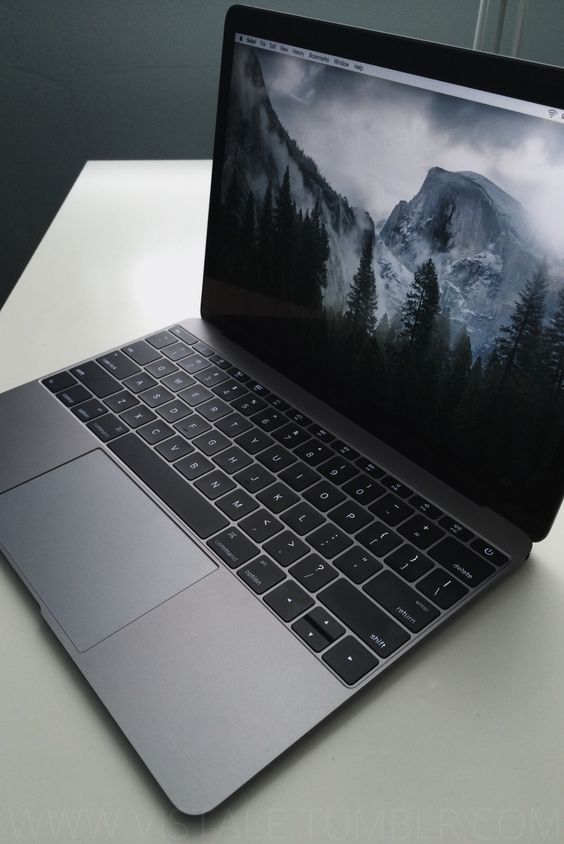
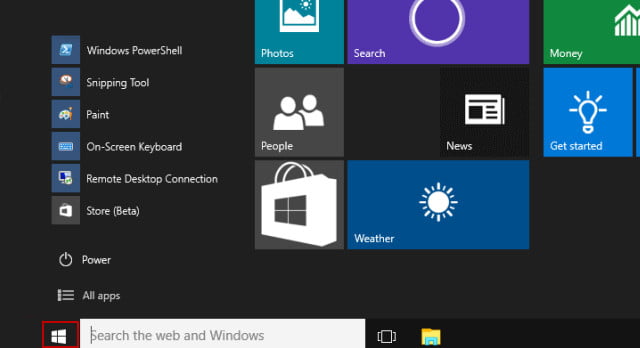

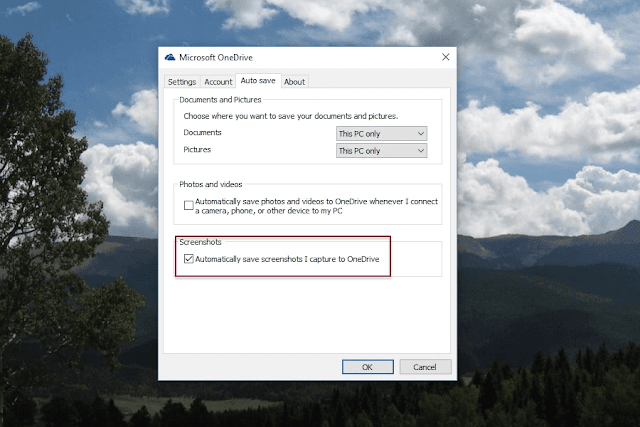
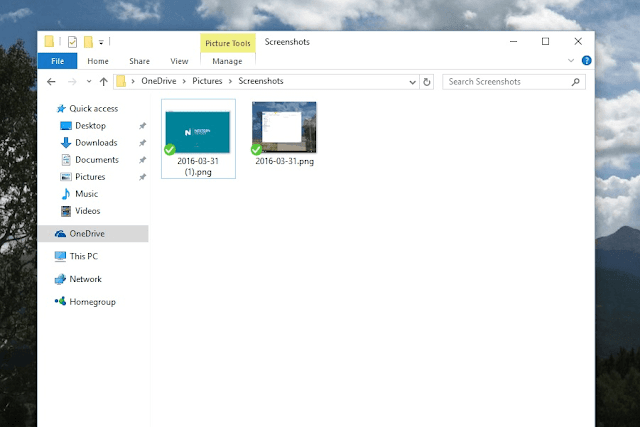

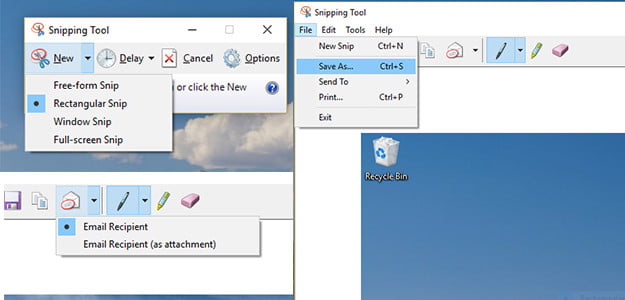
0 Comments